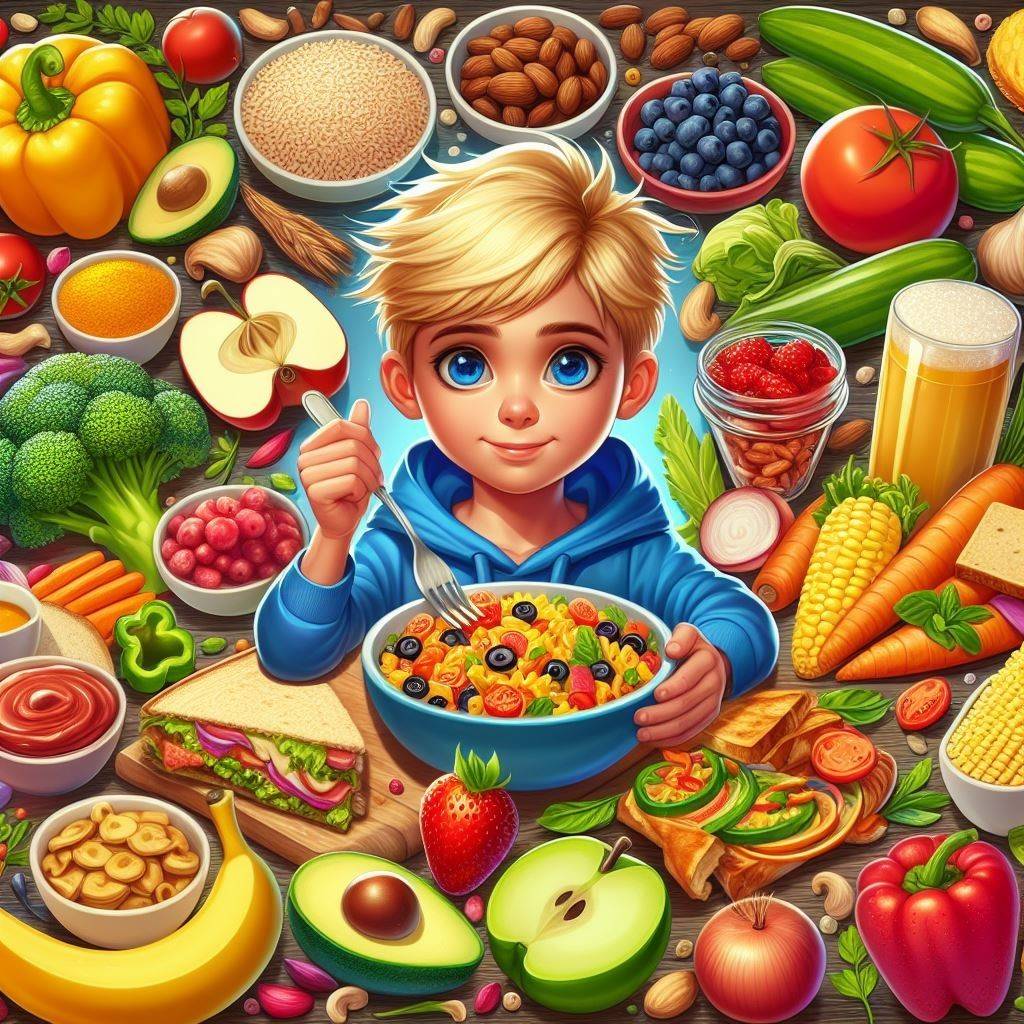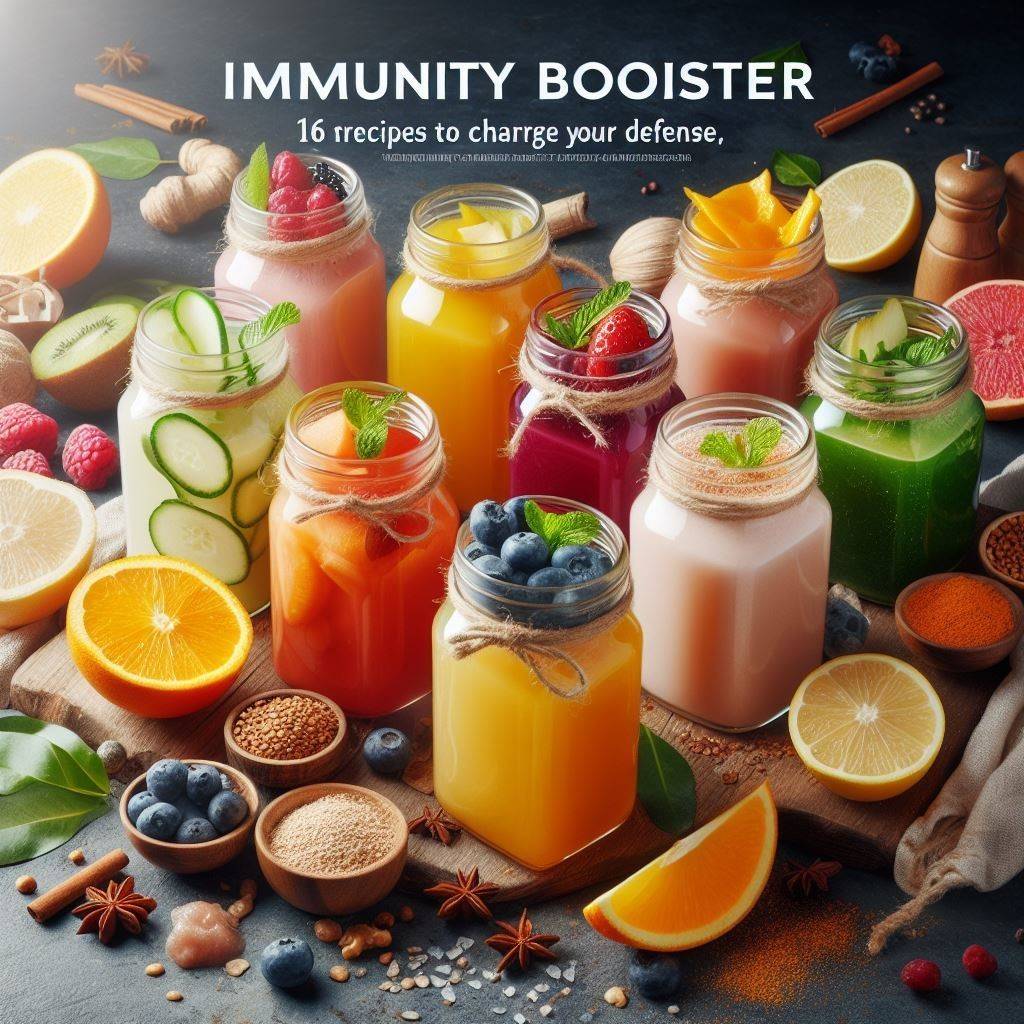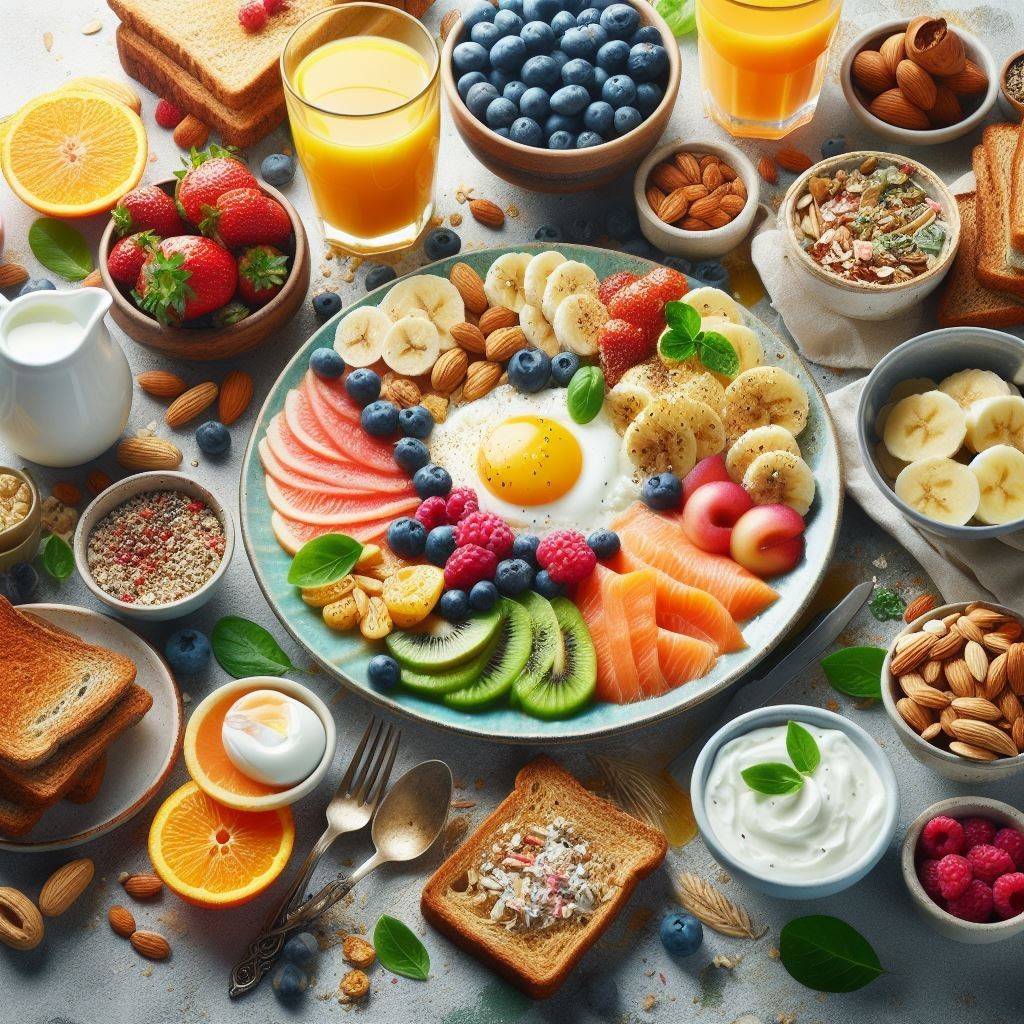15 Best Food for Kids: Smart Choices for Healthy, Happy Children!
As parents, making sure our kids eat right is crucial. The best food for kids gives them the nutrients they need to grow and build healthy habits. But with so many choices, it’s hard to know what’s best. In this guide, we’ll cover the 15 best food for kids, their benefits, and how to make them fun to eat.
The Importance of Balanced Nutrition for Kids
Childhood is a crucial period for physical and cognitive development, making proper nutrition vital. A balanced diet rich in essential nutrients helps support:
- Healthy growth and development: Nutrients like protein, calcium, and iron are critical for building strong bones, muscles, and overall growth.
- Cognitive function: Certain vitamins and minerals, such as omega-3 fatty acids and B vitamins, play a role in brain development and cognitive performance.
- Immune system strength: A diet rich in vitamins A, C, and zinc can bolster the immune system and prevent frequent illnesses.
- Energy levels: Whole grains, fruits, and vegetables provide sustained energy for active play and learning.
By prioritizing nutrient-dense foods, parents can ensure their children receive the necessary building blocks for optimal health and development.
The 15 Best Food for Kids

Here are the top 15 best food for kids that should be part of a well-rounded diet:
1. Whole Grains
Whole grains, such as whole-wheat bread, brown rice, oats, and quinoa, are excellent sources of fiber, vitamins, and minerals. They provide sustained energy and support digestive health. Incorporate whole grains into meals by serving whole-grain cereals, sandwiches, and pasta dishes.
2. Fruits
Fruits are nature’s sweet treats, packed with essential vitamins, minerals, and fiber. Encourage your kids to enjoy a variety of colorful fruits, such as apples, bananas, berries, and oranges. Fresh, frozen, or pureed fruits make great snacks or additions to smoothies and yogurt parfaits.
3. Vegetables
Vegetables are nutrient powerhouses, offering a wide array of vitamins, minerals, and antioxidants. Aim to introduce a variety of colors and textures, like leafy greens, bell peppers, carrots, and broccoli. Serve veggies raw with dips, roasted, or incorporated into soups and casseroles.
4. Lean Proteins
Lean proteins are crucial for growth, muscle development, and tissue repair. Excellent options for best food for kids include lean meats like chicken and turkey, fish, eggs, beans, lentils, and tofu. Get creative with protein-packed dishes like stir-fries, tacos, and meatballs.
5. Dairy Products
Dairy products are an excellent source of calcium, protein, and vitamin D, all essential for strong bones and teeth. Include low-fat or non-fat milk, yogurt, and cheese in your child’s diet. For those with dairy sensitivities, fortified plant-based alternatives can provide similar nutrients.
6. Nuts and Seeds
Nuts and seeds are nutrient-dense powerhouses, offering protein, healthy fats, fiber, and various vitamins and minerals. Incorporate them into trail mixes, sprinkle them over salads or yogurt, or use nut butter as a dip for fruits and veggies.
7. Avocados
Avocados are a fantastic source of healthy monounsaturated fats, fiber, and various vitamins and minerals. Mash them into guacamole, slice them onto sandwiches or salads, or blend them into smoothies for a creamy texture.
8. Sweet Potatoes
Sweet potatoes are an excellent source of fiber, vitamin A, and potassium. Bake, roast, or mash them for a nutrient-dense side dish or incorporate them into soups, stews, and baked goods.
9. Eggs
Eggs are a versatile and nutrient-dense food, providing high-quality protein, vitamins, and minerals. Serve them scrambled, boiled, or as an ingredient in quiches, frittatas, and baked goods.
10. Salmon
Salmon is a rich source of omega-3 fatty acids, essential for brain development and heart health. Grill, bake, or pan-fry salmon fillets, or incorporate canned salmon into salads, patties, or pasta dishes.
11. Berries
Berries are loaded with antioxidants, fiber, and various vitamins and minerals. Blueberries, raspberries, strawberries, and blackberries make excellent additions to smoothies, yogurt parfaits, or as a fresh snack.
12. Leafy Greens
Leafy greens, such as spinach, kale, and Swiss chard, are nutrient powerhouses packed with vitamins A, C, and K, as well as folate and fiber. Incorporate them into salads, smoothies, or sautéed as a side dish.
13. Oats
Oats are a wholesome and fiber-rich grain that can provide sustained energy and support digestive health. Serve oatmeal for breakfast, or use oats in baked goods like muffins, granola bars, or energy bites.
14. Greek Yogurt
Greek yogurt is an excellent source of protein, calcium, and probiotics, which support gut health. Top it with fresh fruits, nuts, or granola for a nutritious snack or breakfast.
15. Hummus
Hummus is a versatile and nutrient-dense dip made from chickpeas, tahini, and olive oil. It’s an excellent source of plant-based protein, fiber, and healthy fats. Serve it with whole-grain pita bread or fresh veggies for dipping.
Creative Ways to Incorporate the Best Food for Kids
Getting kids to embrace nutritious foods can be a challenge, but with a little creativity, you can make healthy eating fun. Here are some tips for incorporating the best food for kids into their meals and snacks:
- Involve them in the process: Let your kids help with grocery shopping, meal planning, and cooking. This will make them more invested in trying new foods.
- Make it visually appealing: Arrange fruits and veggies in fun shapes or patterns on their plates or use cookie cutters to create interesting shapes.
- Mix and match flavors: Experiment with different seasonings, dips, and sauces to enhance the flavors of healthy foods.
- Create themed meals: Plan meals around their favorite characters, colors, or themes to make eating nutritious foods more exciting.
- Offer a variety: Provide a selection of healthy options, so they have choices and can develop their preferences.
- Lead by example: Kids often mimic their parent’s eating habits, so make sure you’re modeling healthy choices as well.
By making healthy eating an interactive and enjoyable experience, you can help your kids develop a positive relationship with nutritious foods from an early age.
The Benefits of the Best Food for Kids
Incorporating the best food for kids into their diet offers numerous benefits for their overall health, development, and well-being. Here are some of the key advantages:
- Supports Proper Growth and Development
- Nutrients like protein, calcium, and iron are essential for building strong bones, muscles, and tissues.
- Adequate nutrition ensures healthy weight gain and prevents nutritional deficiencies that can hinder growth.
- Boosts Cognitive Function and Academic Performance
- Nutrients such as omega-3 fatty acids, iron, and B vitamins contribute to brain development and cognitive abilities.
- A well-nourished brain can enhance focus, memory, and overall academic performance.
- Strengthens the Immune System
- Vitamins A, C, and E, as well as zinc and other antioxidants, support a robust immune system.
- A strong immune system helps protect against frequent illnesses, reducing school absenteeism.
- Promotes Healthy Digestion
- Fiber-rich foods like whole grains, fruits, and vegetables aid in regular bowel movements and prevent constipation.
- Probiotics found in foods like yogurt support a healthy gut microbiome.
- Establishes Lifelong Healthy Eating Habits
- Exposing children to a variety of nutrient-dense foods from an early age can shape their food preferences and habits.
- Positive associations with healthy foods can lead to better dietary choices throughout life.
- Provides Energy and Stamina
- Whole, unprocessed foods provide sustained energy for active play, sports, and learning activities.
- Adequate hydration and nutrient intake can prevent fatigue and support physical endurance.
- Supports Emotional and Mental Well-being
- Certain nutrients, like omega-3 fatty acids and B vitamins, play a role in regulating mood and emotional balance.
- A nutritious diet can contribute to better sleep, reduced anxiety, and improved overall emotional well-being.
By prioritizing the best food for kids, parents can give their children a strong foundation for lifelong health, cognitive development, and overall well-being.
Frequently Asked Questions (FAQs):
What are the best foods for kids to eat?
The best foods for kids include whole grains, fruits, vegetables, lean proteins, dairy products, and healthy fats like avocados, nuts, and seeds. These nutrient-dense foods provide essential vitamins, minerals, and other nutrients crucial for growth, development, and overall health.
What foods are good for child growth?
Foods rich in protein, calcium, iron, and other essential nutrients are particularly important for supporting child growth. Examples include lean meats, eggs, beans, lentils, dairy products, leafy greens, and fortified cereals.
What do 7-year-olds eat?
At 7 years old, children can typically consume a variety of foods from all food groups, including whole grains, fruits, vegetables, lean proteins, dairy, and healthy fats. Portion sizes should be adjusted to approximately one-half to two-thirds of an adult portion.
What are the 10 healthiest foods?
Some of the healthiest foods that can be incorporated into a child’s diet include:
- Whole grains (e.g., whole wheat bread, brown rice, oats)
- Fruits (e.g., apples, bananas, berries)
- Vegetables (e.g., broccoli, carrots, spinach)
- Lean proteins (e.g., chicken, fish, eggs, lentils)
- Dairy products (e.g., low-fat milk, yogurt, cheese)
- Nuts and seeds.
- Avocados
- Sweet potatoes
- Salmon
- Greek yogurt
These foods provide a wide range of essential nutrients, fiber, and healthy fats, contributing to overall health and well-being.
By prioritizing the best food for kids and fostering a positive relationship with healthy eating from an early age, parents can set their children on a path toward lifelong wellness and success.
Conclusion
Providing children with the best food for kids is a crucial responsibility that lays the foundation for their overall growth, development, and lifelong health. By incorporating a variety of nutrient-dense foods like whole grains, fruits, vegetables, lean proteins, dairy products, and healthy fats, parents can ensure their children receive the essential building blocks for strong bones, healthy muscles, and optimal cognitive function.
While introducing new foods and encouraging a well-balanced diet can be challenging, patience, creativity, and consistency are key. Involving children in the meal planning and preparation process, making healthy eating fun and engaging, and leading by example can help foster a positive relationship with nutritious foods from an early age.
Remember, every child is unique, and it may take time and multiple exposures before they embrace new flavors and textures. Be persistent, celebrate small victories, and seek professional guidance if needed. By prioritizing the best food for kids, you are investing in your child’s long-term well-being and setting them up for a lifetime of healthy habits.



